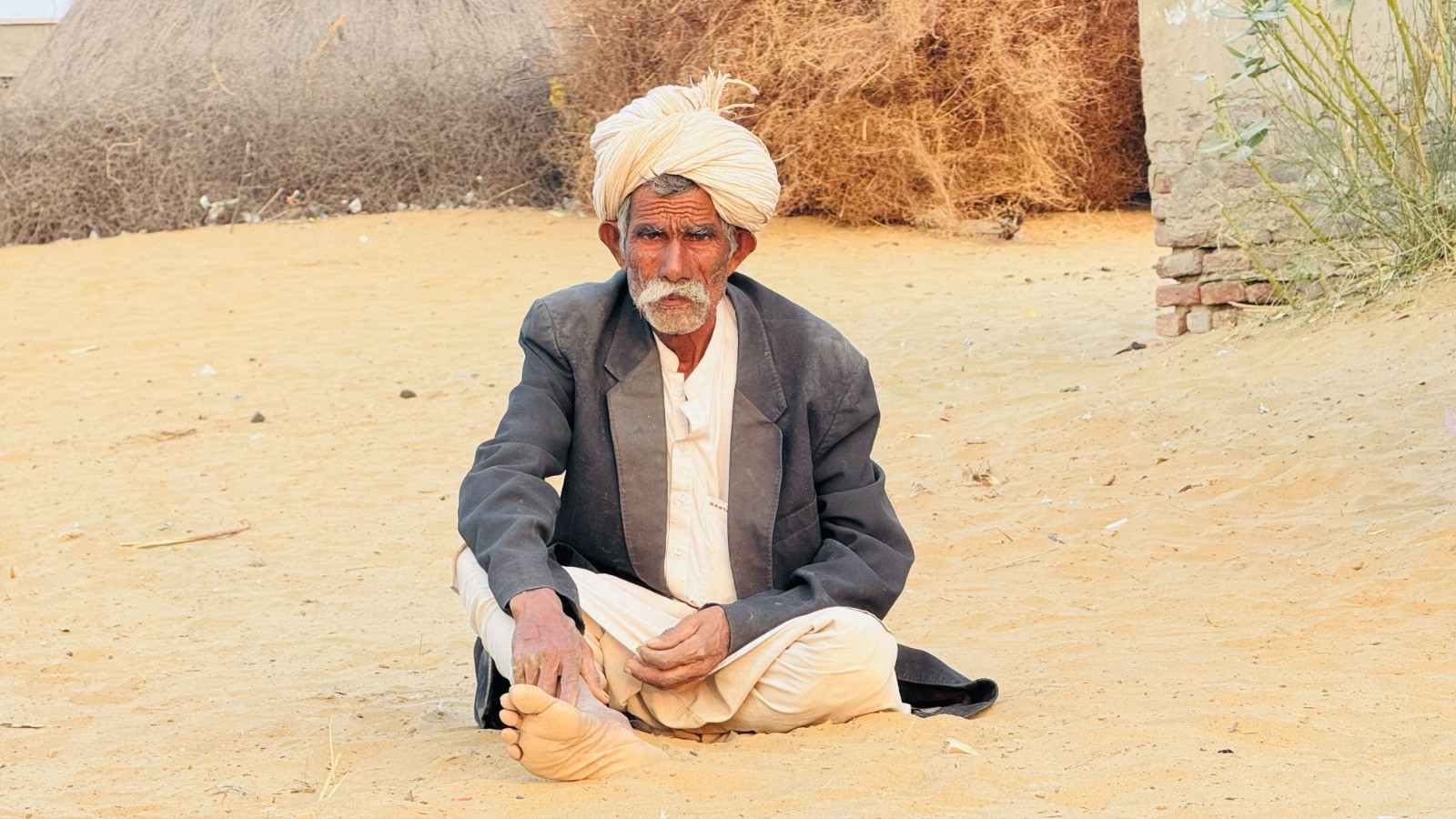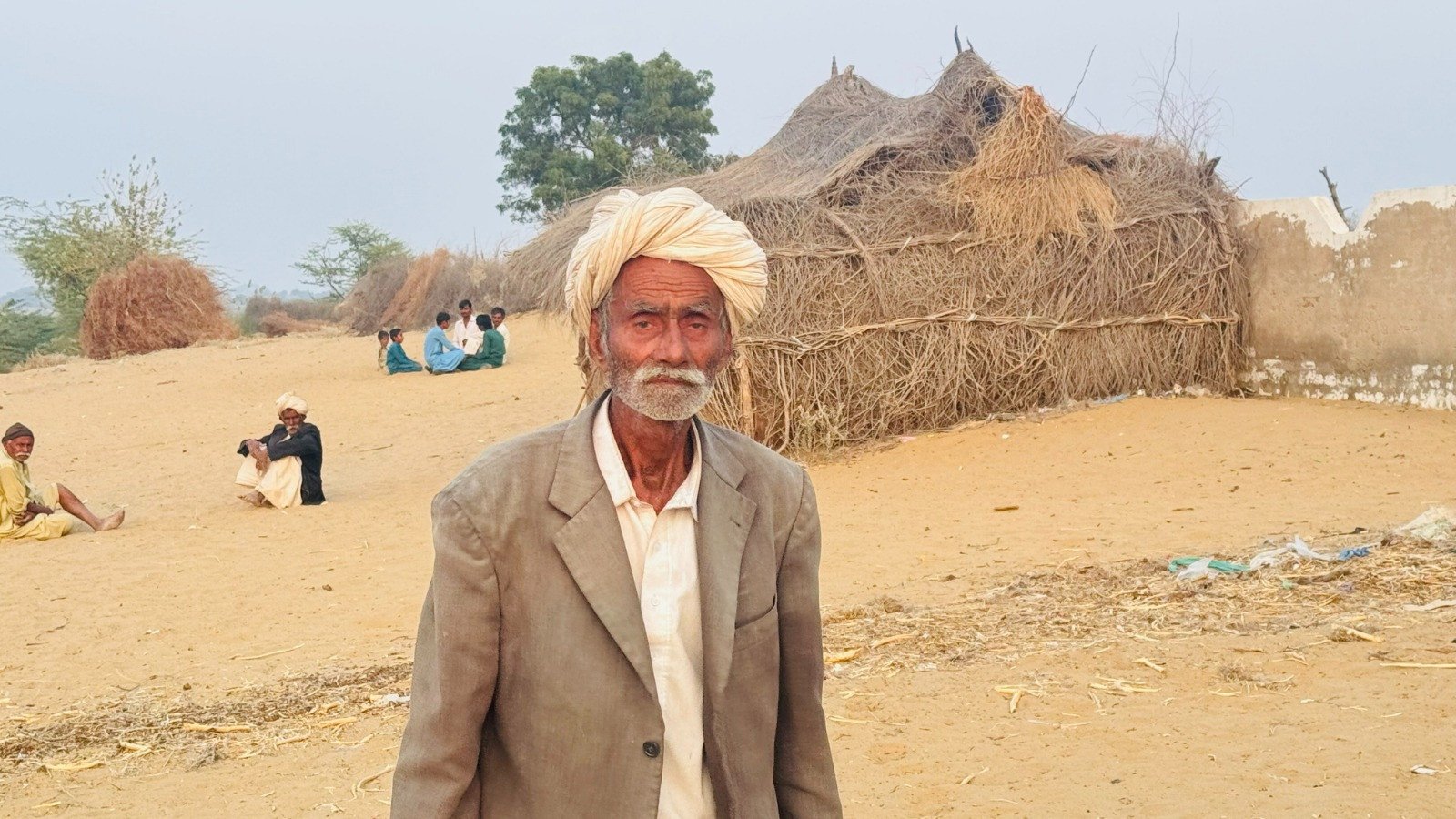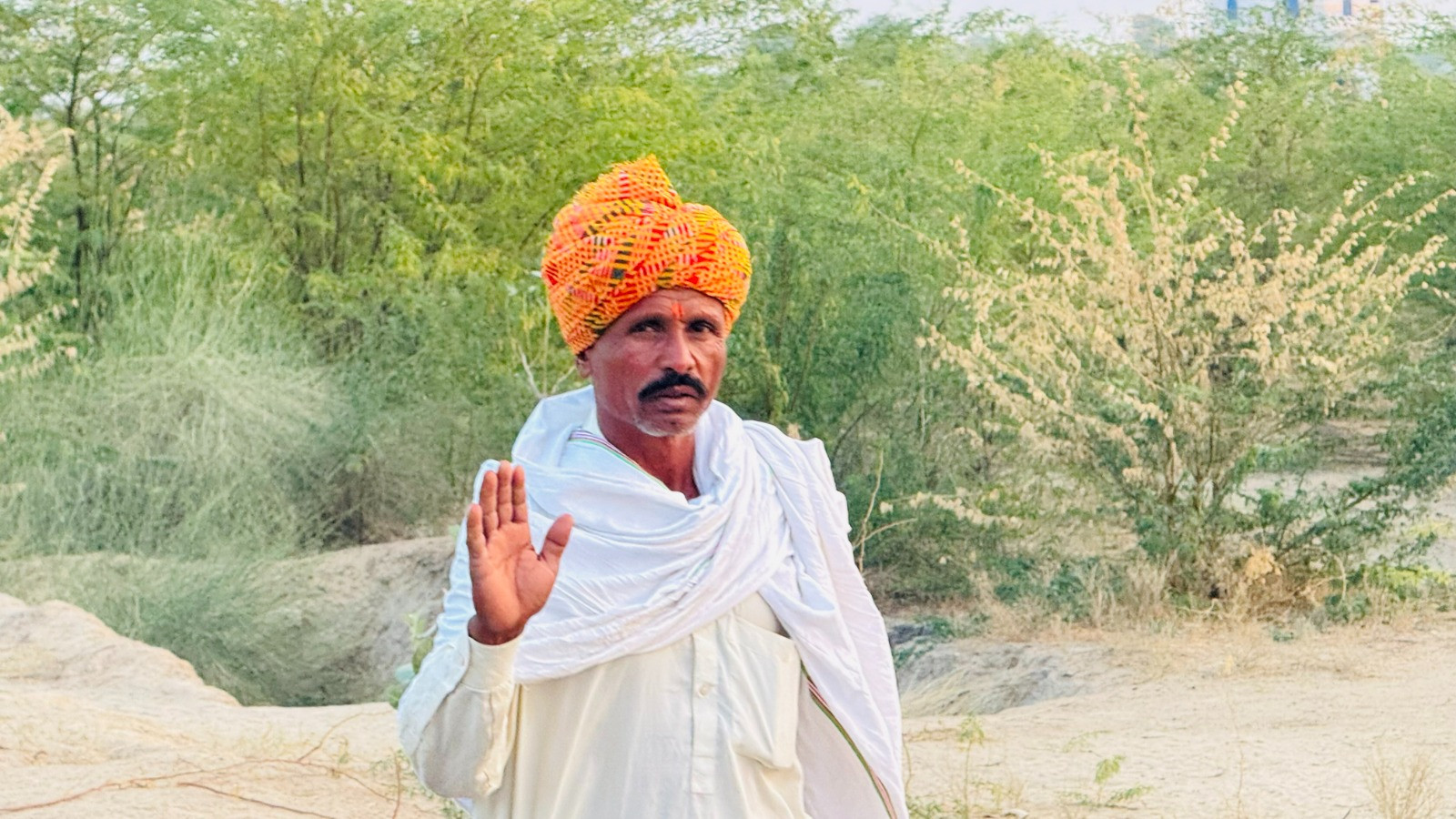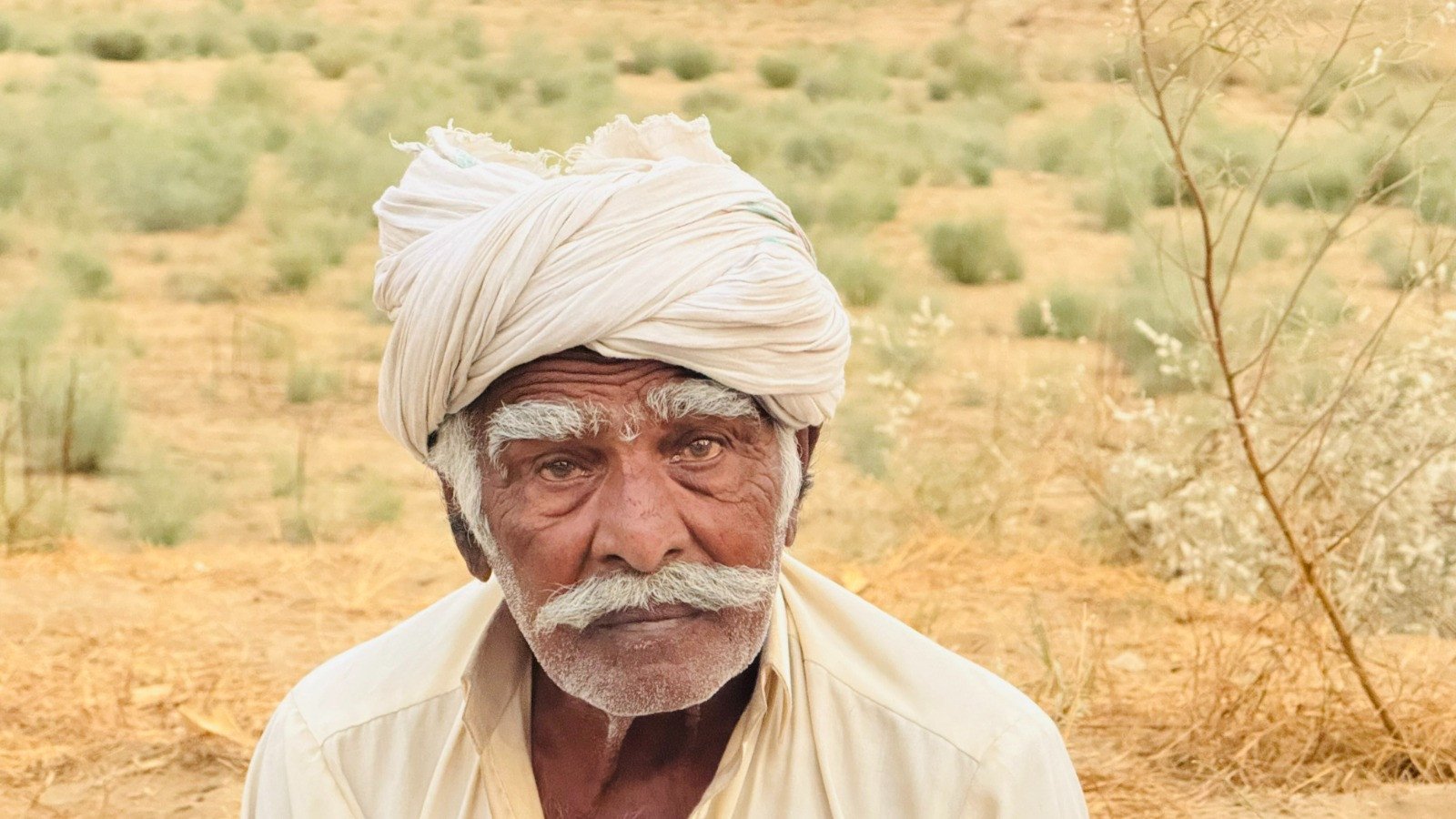In Tharparkar and many other parts of Sindh, as well as across the country, elderly men traditionally never left home without wearing a turban. Likewise, horse and camel trainers would never ride or compete in races without one. Not long ago, a man stepping out into the village without his turban signaled that something was amiss, or that he was in some kind of distress or that something was wrong. Today, however, the practice has largely faded, with turbans now reserved for special occasions such as weddings and cultural festivals.
"Nowadays, we can no longer identify a person just by looking at his turban," says 75-year-old Shankar Lal Nai. "Not long ago, the style and wrapping of a turban could instantly reveal a person’s community, caste, tribe, and region. Every group had its own distinct way of tying it."
Interestingly, the tip or peak of the turban serves as a marker of identity. "There are many types of turbans," Shankar Lal explains. "But in Sindh, two styles are especially popular: ‘Wari’ and ‘Supari’ (the turban is shaped like a betel nut). The tribe or caste can often be recognised by the turban’s tip. In the Supari style, the cloth is twisted like a rope, while in the Wari style, it is simply wrapped around the head without twisting."

“Identifying caste and tribe is easy for us if a man wears a turban,” Shankar explains. “If the turban has no tip, it means this person belongs to the Kumbhar caste. If the tip of the turban is on the front, it means this person belongs to the Rajput tribe, and if the tip of the turban is at the back, it means this person belongs to the Bheel community. Some Meghwars wore the Jinnah cap, especially as they were followers of the Muslim League at the time. Others would just place a piece of cloth on their head.”
"A turban is not just yards of cloth wrapped round the head, it symbolises honour and responsibility,” says 70-year-old Sangidan Singh Rajput. When you wear a turban on your head, it means you are carrying a responsibility. For instance, if you are the head of a family, it means you are responsible for that family. Similarly, if you are head of the caste or sub-caste, you stand responsible for your sub-caste. Of course if you are head of a tribe, you are responsible for the tribe.”
In a Rajput family, if a man dies, the men belonging to the family as well as all the males in the entire village do not wear a turban for the next twelve days as a mark of respect and mourning, Sangidan further explained. When they resume wearing turbans after that day, the head of the family wraps turbans on the men of lower communities with his own heads in gratitude to reciprocate for their gesture.

If the chief of the Rajput tribe, known as Rana, dies, the men of the family do not wear turbans for twelve days. The eldest son wraps the turban around his head at the time of the death of his father as he assumes the role of a new Rana or chief of the Rajput tribe. For the death of any other family member, the Rana would not remove his turban.
The turban unwraps into seven or more metres of cloth, depending on how big the turban is required to be. White fabric is used for turbans in Sindh, but across the border in India, people like to wear colourful turbans. The Rajhastani turban, known as Fanta, is only worn by the Rajput tribe of Rajhastan, India, and is a mark of identification of their tribe.
“Turbans also reveal the age group,” says Shankar Lal. “In the Rajput caste, men who are less than forty years wear a light yellow turban, while the ones who are over forty wear a light, white turban. These days however it is difficult to determine that. There is no particular age limit to start wearing a turban, but generally, men wear turbans after they are married.”
In his book, Lok Sagar Ja Moti, ex-MNA Paroo Mal Kolhi writes, “Kolhi community mostly wrap red turbans known as Madrasi turban. When colonial police started to take work from people who wore red turbans without any remuneration or wages for their work, the Kolhi community discarded wearing turbans. At the time, the colonial police also wore red turbans.

“Turbans look beautiful when half of the ear is covered with turban cloth. History books show pictures of warriors where they are seen wearing red turbans,” says Sangidan. “When the warriors fought on horseback with swords, their turbans protected their heads. Turbans also prevent from harsh weather in winter and summer. In a way, turbans offer protection like helmets do for motorcyclists.”
The turban holds great significance as a fundamental symbol of culture and tradition. Removing your turban and placing it before someone is a powerful gesture of humility, often symbolising a plea for forgiveness or pardon. In many villages, juries may grant forgiveness—even for serious offenses like murder—when this act is performed.
"The Sindhi cap replaced the turban eight decades ago,” claims 35-year-old Aftab Samejo. “Prior to that all Sindhis from villages and cities wore turbans. Even though, you see the cap commonly now, it is not the original cultural sign of the Sindhi community. These days all Sindhis, including children, wear Sindhi caps in most cultural events and weddings celebrations because they are easily available and convenient to wear. Since caps are available in different colours, sizes and designs, people prefer to wear caps instead of wrapping seven metres of cloth round their heads.”

“Wrapping a turban requires expertise,” he explains. “People who used to wear turbans were mostly experts at wrapping it round their heads. Of course, not everyone who dons a turban is an expert at wrapping it. Nowadays, experts of turban wrapping/tying services are available in the market, against some charges.”
After donning a turban that was expertly wrapped round the head, it is carefully removed so it can be worn the next day or time. Ready-tied or pre-tied turbans are also available in the market. These are bought for weddings by younger people. Some grooms have a turban tying ceremony, while others prefer to be the ready-wrapped ones from the market.
"When a tribal chief or an esteemed caste member passes away, the chiefs of various communities, castes, and tribes come together to honour the transition of leadership. One by one, they wrap and fold yards of cloth around the head of the late chief’s eldest son. When the final fold is in place, the newly turbaned son assumes his father’s role, officially becoming the head of the community."
Various other different rituals are also connected with turbans in different communities. A turban is the most unique and beautiful symbol of rural culture, even though in an urban setting, turbans are looked at with a discerning eye.
Cultural and ethnic symbols like the turban are more than just attire—they carry centuries of history, identity, and pride. If the younger generation drifts away from these traditions, they risk becoming mere artifacts in museums, rather than living expressions of heritage. Embracing these symbols isn’t about resisting change; it’s about keeping a connection to one’s roots alive, ensuring that future generations inherit not just stories but a culture they can wear, embody, and pass on.
Khalid Kumbhar is a freelance contributor
All facts and information are the sole responsibility of the writer
